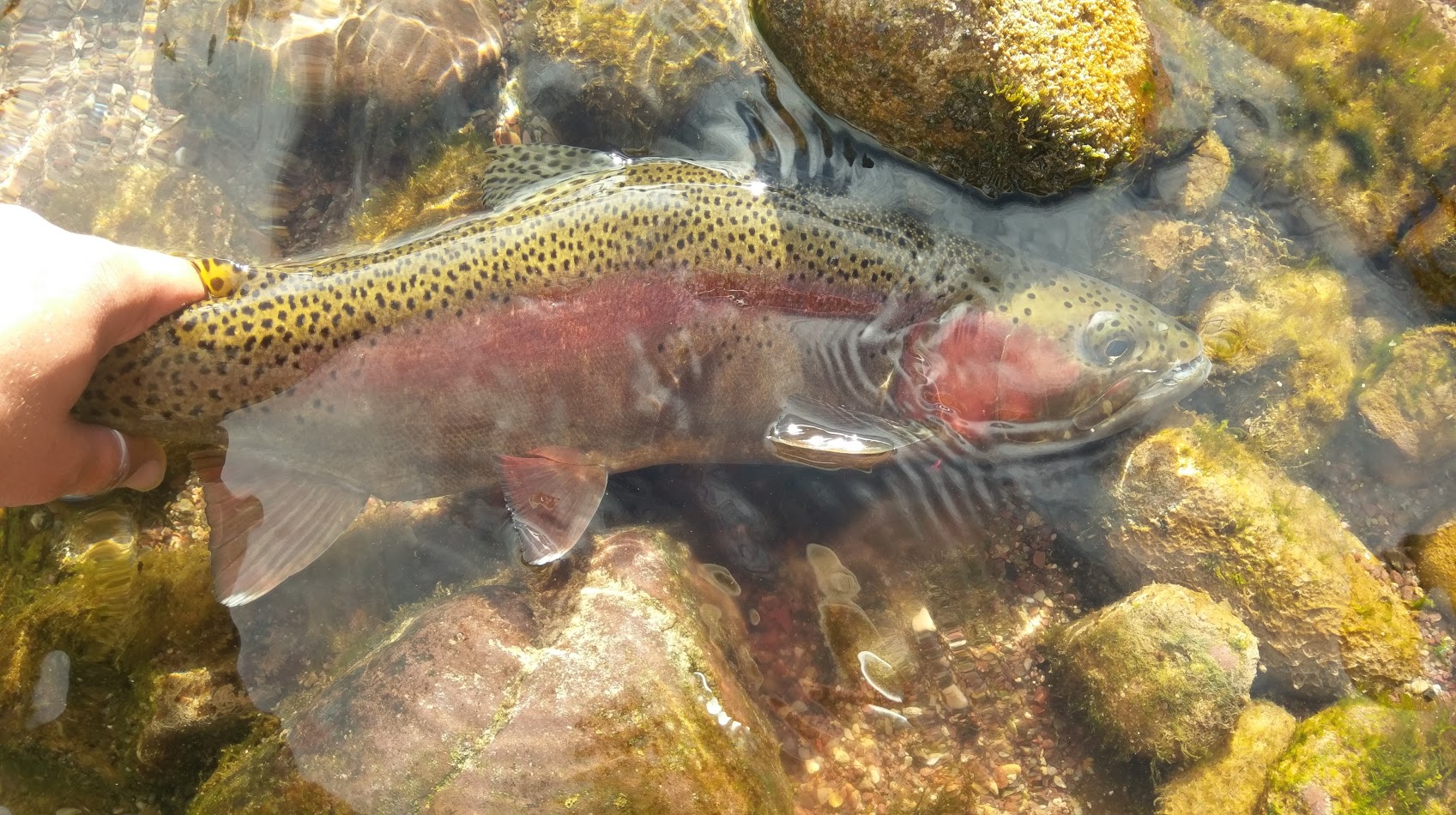Nothing puts the cap on a great day of fishing quite like sitting around a fire and shooting the bull with your buddies. Eating more hot dogs than you should, staying up way too late, and watching your buddies have one too many beers is part of the fly fishing experience that keeps us coming back.
It’s around these campfires that we have the best conversations, too. A while back I was in Oregon with my good buddy Ryan and his son Josh. We’d trudged back to camp in pitch-black dark since the moon wasn’t up and we’d fished until we couldn’t see our flies. I’d have kept fishing streamers in the dark, but Ryan informed me it’s illegal to fish after dark in that part of Oregon.
We got a fire going while Josh and I talked about the big brown he’d landed on a size 22 rusty spinner. Ryan is one hell of a camp chef, so we sit back to let him work on our steak and potatoes.
None of us drink, so we skipped the part of the night where guys get too buzzed and went straight to rambling about the machinations of fly fishing. I think most anglers do this more than they realize, but they see it as exploring the unknown areas of the sport. It’s really just guesswork, since most of what we know about fishing amounts to a guess and enough experience to validate guessing that way again.
Ryan’s a dry-fly purist, and an hour or so after dinner he asked me what fly I’d fish if I could only use one dry for the rest of my life.
“Elk hair caddis, size 14,” I said immediately. I didn’t even have to think about it.
Ryan wasn’t impressed. He ties some of the smallest, most intricate flies I’ve ever seen, and I’ve personally witnessed him hook, fight, and land a 22-inch brown on a size 30 parachute midge.
“I’d use that midge we were using today,” he said, referring to a pattern of his own creation. “It looks enough like something stuck in the surface film I think it’d work everywhere.”
“Caddis are everywhere,” I countered.
He shrugged. “So are small bugs.”
That got me thinking if my choice of a caddis was smart. Unless you’ve reached some sort of angling nirvana where you don’t need to use more than one pattern like the rest of us mortals, the idea of using one fly is purely academic. It’s fun to entertain, though.
If I had to choose one dry fly to use forever, though, this is what I’d take into consideration before making a snap decision.
Size
Size matters, folks. The single most important thing you’re matching a dry fly hatch is to match the size of most of the bugs coming off. A size larger or smaller helps if the hatch is thick.
Shape
Most bugs have some sort of tapered body, with a sparse tail and some sort of legs. The Adams is such an effective fly because it mimics all of these characteristics without looking too much like something else.
Type of water
If you fish tailwaters more often, you’ll need more “accurately tied” flies. These flies are tied to be as close a match as possible, and some tailwaters have spawned their very own flies.
If you’re into small creeks and streams, you don’t need something as technical. Fish in this type of water don’t have the luxury of being as picky as their tailwater counterparts, so you can get away with less realistic-looking flies.
So what’s my fly?
My chosen pattern would be one developed by my grandfather. I’ve dubbed it the Durrant Family Special (which you can get with a subscription to Postfly) but it’s just an Adams with an elk hair wing tied behind the hackle.
Spencer Durrant is a fly fishing writer, outdoors columnist, and novelist from Utah. His work has appeared in Field & Stream, Hatch Magazine, TROUT Magazine, Sporting Classics Daily, and other national publications. He’s also the managing editor for The Modern Trout Bum. Connect with him on Twitter/Facebook, @Spencer_Durrant.


